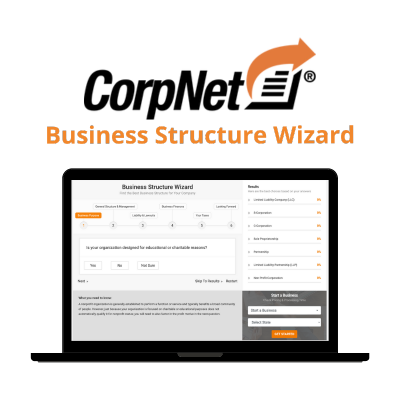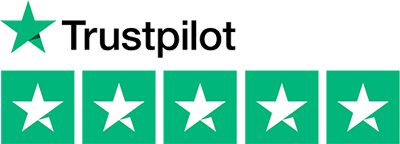I can understand why! Here are just a few data points that I find exciting:
- The number of active buyers on Etsy has increased steadily over the years, going from 9.3 million in 2012 to over 46.3 million in 2019.
- The number of sellers who have joined Etsy has also grown—from 830,000 in 2012 to nearly 2.7 million in 2019.
- Many Etsy sellers use the platform to take their creative endeavors from “hobby” to “bona fide business,” and 95% of Etsy sellers run their businesses from home. [1]
- Top selling Etsy stores have revenues at $1.8 and $1.4 million in sales. [2]
Etsy offers a number of advantages from ease of setup and reduced shipping costs to massive online reach and lots of options for keeping customers engaged. Etsy has made it easy for anyone, anywhere to become an online seller of virtually any type of good from craft and supplies to handmade items and home decor.
On the Etsy.com website, you’ll find additional details about setting up a shop there. In this article, I’m going to discuss the main legal and administrative steps for starting a small business on Etsy. I hope to give you an idea of what may be involved as you explore the opportunity. For legal, tax, and accounting advice, however, consult with trusted legal and financial professionals. They can assess your situation and offer expert guidance.
1. Determine If Your Product Idea is Viable
No entrepreneurs in any line of business can know for sure that they will have success. Likewise, setting up an Etsy store to sell your products comes with no guarantees.
However, you can give yourself a better chance of succeeding if you do some research to understand your target market and your competition on Etsy. Making that effort before you open your Etsy store will better ensure that the products you sell offer something unique that will attract buyers.
Pricing, of course, is essential, as well. It’s critical to understand your direct costs and indirect costs so that you can price your products appropriately for customers and run a profitable business.
Examples of direct costs include:
- Materials to make your products (or costs to purchase the items you’re selling on Etsy)
- Packaging costs
- Shipping costs
- Direct labor costs – Labor costs directly associated with making your products. If you’re not cutting yourself a paycheck for this work, it’s still important to factor in 1) your time for creating each unit and 2) how much money would be associated with that time.
Examples of indirect costs include:
- Rental of your studio, workspace, or storage
- Taxes
- Etsy fees – Currently set at $.20 listing fee with a 6.5% transaction fee and 3% + $.25 payment processing fee.
- Indirect labor costs – Consider the time you’re spending on the aspects of the business not associated with making the product. For example: Managing your Etsy store, posting on social media, responding to email messages, etc.
- Professional fees – Such as your attorney and tax advisor.
- Business compliance costs – Such as licenses and permits and state fees for business registration, fictitious name filing, annual report filing, etc.
Etsy charges sellers a variety of fees. I’ve highlighted several below:
- Listing fee – Charged to sellers when they list an item in their Etsy store ($0.20 per listing). Sellers pay this whether or not a sale occurs.
- Multiple quantity fee – Charged to sellers when they sell multiple quantities of a listing in one transaction ($0.20 per additional item). The listing fee covers the first item. Only additional quantities sold in the transaction are subject to this fee.
- Transaction fees – Charged to sellers whenever they make a sale (5% of the total cost of the transaction, including the product price, shipping, delivery, and gift wrapping)
- Payment processing fee – U.S. rate is 3% of the total sale plus per order fee of $0.25.
You can find a full list of Etsy’s fees through its online Help Center.
2. Decide Which Business Entity Type is Best
The business structure you choose for your Etsy business will affect your tax obligations, your personal liability for your business’s debts, and the formalities you’ll need to fulfill to keep your business legally compliant. I encourage you to get professional tax and legal advice when making this critical decision.
Most Etsy sellers operate as sole proprietorships. However, sellers may find forming an LLC or incorporating their Etsy business advantageous. Below is an overview of popular business structures:
- Sole Proprietor (or Partnership, if more than one owner) – Operating a business as a Sole Proprietor (an unincorporated business structure) requires filing no formation documentation with the state (aside from possibly a DBA—more on that later!). It is the most simple option from a business compliance perspective. A potential downside is that a sole proprietorship provides no legal or financial separation between the business and the business owner’s personal assets. This means that business owners are wholly responsible for any lawsuits against or debts of the company. Business owners report and pay taxes related to business activities on their personal income tax returns. All business profits are subject to federal income tax and self-employment (Social Security and Medicare) taxes. Typically, sole proprietors pay themselves via non-tax-deductible owner’s withdrawal from the business rather than through payroll.
- Limited Liability Company (LLC) – A Limited Liability Company offers much of the simplicity of a sole proprietorship while creating a legal shield between the business and the business owners (called “members”). LLC members and the LLC are treated as separate legal entities. So generally, if someone sues the LLC or it cannot pay its debts, the LLC owners’ personal assets are protected. For tax purposes, an LLC is treated as the same tax-paying entity as its members. All business tax obligations pass through to the owner’s individual tax returns. LLC members pay themselves via non-tax-deductible owner’s withdrawal from the business rather than through payroll. As with a sole proprietorship, all company profits are subject to self-employment taxes.
- C Corporation (C Corp) – A C Corporation operates as a separate legal and tax-paying entity from its owners (called “shareholders). This structure offers the most liability protection to business owners. Corporations report and pay income tax (at the corporate income tax rate) on their own income tax returns. Owners that work in the business get paid through company payroll rather than owner’s withdrawal. You have probably heard the term “double taxation” in reference to how C Corporations are taxed. That’s because some corporate profits get taxed twice: once at the corporate level when the business reports profits and then a second time at the shareholder level on profits that are distributed to shareholders as dividend income.
- S Corporation – The S Corporation isn’t a business entity type. Instead, it is a special tax election LLCs and corporations may choose (if they meet the IRS’s eligibility criteria). As an S Corporation, a business’s profits and losses pass through to its owner’s individual tax returns. When an LLC chooses S Corp tax treatment, it’s usually to lower its owners’ self-employment tax burden. S Corp owners that work in the business get paid through company payroll rather than through owner draws. Instead of paying Social Security and Medicare taxes on all business profits, owners only pay those self-employment taxes on the wages and salaries they’re paid by the company. Profits paid to shareholders as distributions are not subject to those taxes. Corporations that elect S Corp treatment usually do so to eliminate double taxation (profits flow through to owners’ tax returns).
No one business entity type can be right for all Etsy business owners. Research the pros and cons carefully and consider talking with an attorney or accountant as you make your decision.
3. Choose Your Business Name
Your business name will be one of your most valuable branding and marketing assets, so it’s vital to choose it wisely.
When homing in on the business name you want to use, verify that another business hasn’t already taken it on Etsy. It is also wise to consider doing a corporate name search to make sure the name is available in your state. Also, consider checking to see if the business name is available in all 50 states by conducting a trademark search. This is important if your company will be registered in more than one state.
Etsy offers some food for thought to help sellers decide on their shop name. As you choose your business’s legal name, keep in mind that Etsy’s platform will only allow a shop name to have 4 to 20 characters. If an Etsy store owner uses a shop name that’s different from the legal name of the owner (whether an individual or a business), the seller may need to file a DBA (fictitious name registration) in the state to sell under that name. This is something an attorney can help you determine.
4. Appoint a Registered Agent
An Etsy business that operates as an LLC, S Corp, or C Corp must designate a registered agent in the state where it is registered. A role of a registered agent is to accept “service of process” (important government, legal, and tax notices) on behalf of the business. The designated registered agent must meet the state’s qualifications—including certain office hours from Monday through Friday—to serve in that capacity. Some companies, like CorpNet, are authorized to provide their registered agent services in all 50 states.
5. Register Your Business With the State
To make a business entity official with the state, it requires filing registration paperwork. LLCs must file Articles of Organization, and C Corporations must file Articles of Incorporation. (Some states have different names for the paperwork, but fundamentally they require the same details.)
When a qualifying LLC or C Corporation wants to be treated as an S Corporation for federal income tax purposes, it must file IRS Form 2553 in addition to its formation documents.
Businesses that want to operate as a sole proprietor, typically do not have to file official registration documents with the state. However, they do need to file a DBA (“Doing Business As”) if they will conduct business using a fictitious name. So, if they are selling products under a made-up name that doesn’t include the first and last name of the owner(s), the DBA filing will notify the state and the public about who operates the business. For example, if Maura Longo wants to run her Etsy business under the name of “Maura’s Magical Masks” rather than “Maura Longo’s Masks,” she would need to file a DBA.
Also, a registered business may need to file a DBA if they will use a name other than their legal business name as their Etsy shop name (remember, Etsy only allows shop names to be 4 to 20 characters long).
Depending on the business entity type and the state, the business formation paperwork may get a little confusing. Business owners may choose to prepare and submit the filing themselves, ask an attorney to do it, or save money and ensure it’s done correctly by using an online business formation service, like CorpNet.
6. Obtain an EIN from the IRS
Most banks require an EIN (Employer Identification Number) to open a business bank account. Also known as a Federal Tax ID Number, an EIN is a unique nine-digit number used by the federal government to identify the business as a tax-paying entity. EINs are used when reporting and filing taxes and are sometimes required for other reports and filings. The IRS issues them for free. Business owners can apply for an EIN via the IRS website or ask CorpNet to complete and submit the EIN application.
7. Open a Business Bank Account
It’s helpful to maintain a business bank account so that you can keep your personal and business financial transactions and funds separate. For LLCs and corporations, it’s imperative to have that separation. Owners of registered business entities that commingle personal and business funds risk losing their personal liability protection. If someone sues the company, a court of law may decide that sufficient measures weren’t taken to preserve the corporate veil that separates the owner’s personal assets from the liabilities of the company. A dedicated bank account for the business and credit card account in the company’s name (and using them for business transactions only) will help draw the line drawn between personal and business monies.
8. Apply for Business Licenses and Permits
Etsy doesn’t require sellers to have a business license to sell products via its platform. However, the state, county, and local municipality where you’ve formed your business may require you to hold licenses and permits to operate your company legally.
Depending on where the customers ordering your products live, you might also have to apply for a sales tax permit in those states or local jurisdictions.
In states with Marketplace Facilitator laws in place, Etsy calculates, collects, and remits sales tax on orders shipped to those states. You can find a current list of the states for which Etsy does sales tax collection and remittance on the Etsy website.
So, what about sales tax for orders shipped to states that don’t have Marketplace Facilitator legislation?
In those states, the Etsy seller may be responsible for registering with the state or local tax bureau—and for calculating, collecting, and remitting sales tax. Generally, sales tax registration is required when a seller has either economic nexus or a physical presence in the state.
Economic nexus is when a seller reaches a threshold of either sales revenue or the number of sales transactions in a state. States’ thresholds that determine economic nexus vary. For example, California’s economic nexus threshold is when a remote seller’s gross sales exceed $500,000 in a 12-month period. Whereas, Arkansas has set its threshold at taxable sales of more than $100,000 or 200 or more separate sales transactions.
If a buyer purchases a taxable product from outside of its taxing jurisdiction and the seller did not collect sales tax, the buyer must report and pay a use tax for the storage, use, or consumption of that item.
Keep in mind that sales tax policies have undergone many changes over the past several years. Getting professional tax and legal guidance will help ensure you understand what you must do to comply with the laws and meet any sales tax permit requirements for your Etsy business.
9. Create an Etsy Account
Create an Etsy account, or if you already have one, sign in. You’ll use your account to run your Etsy shop.
To give a face to your brand and allow others in the Etsy community to get to know you, upload a good-quality profile picture and write a compelling bio.
Etsy requires that profile images include:
- At least 400 x 400 pixels in size
- Smaller than 10MB
- In either .jpg, .png, or .gif file format
Etsy offers some helpful dos and don’ts of crafting a bio, and I encourage you to review them before writing yours.
10. Set Up Your Etsy Shop
To begin selling on Etsy, you’ll need to set up and open your Etsy shop. To do this, visit the Etsy website, using a desktop web browser:
- Go to “Sell on Etsy” (at the top right of the Etsy website, and then select “Open Your Etsy Shop”).
- Choose your shop preferences (including the language, country, and currency).
- Enter your shop name.
After setting up your shop, you will be able to fine-tune it and manage it using the Sell on Etsy mobile app.
11. Add Listings to Stock Your Shop
To add the items you want to sell, go to your Etsy account and select “Shop Manager.” Then, If you’re a new seller, choose “Your Shop.” Once you already have items in your shop, you can add new listings by selecting “Listings.”
There are various elements and information to add when setting up a listing:
- Product photos – Etsy recommends using at least five images of each item so that shoppers can see your product from different angles and feel more confident in their buying decision. Images should be no less than 2,000 pixels wide (height may vary). The larger the image, the better buyers will be able to zoom in to see your product close-up. As you’re uploading photos, consider which one you would like to be the thumbnail image. That’s the one that buyers will see on your shop home page, in Etsy search results and other areas of the website.
- Videos – Uploading product videos are optional, but they can further showcase your listing. Videos must be 5 to 15 seconds long (ideal resolution is at least 1,080 pixels). Note that listing videos do not contain audio. If your video was recorded with sound, the audio will be removed when the video is uploaded.
- Listing details – This information will affect how your listing is categorized on Etsy and found in Etsy search. Give your listing a descriptive title (up to 140 characters). Also, complete the “About this listing” information to inform customers what the item is, who made it, when it was made, and if your item is Handmade, Vintage, or a Craft Supply. Then, choose the product category in which your item should appear on Etsy’s Categories page. You can also set other attributes to define your listing further.
- Listing description – How you describe your product will affect the first impression you make on customers and how easily your item will be found in Etsy search. When describing your listing, consider using titles and tags to help people find your product when they’re looking for items like those you create. Also, pay attention to including keywords that shoppers are likely to use when looking for products like yours. You don’t have to be an SEO expert, but it can be worthwhile to learn some Etsy SEO basics to improve your shop’s visibility in Etsy search.
- Pricing and inventory – In addition to setting the price and showing the quantity of your items in stock, you can also add SKU (Stock Keeping Unit) numbers to keep track of your inventory.
- Shipping – After setting up shipping profiles for your shop, you can select the shipping option you want for your listings.
12. Select How Customers May Pay
Etsy requires sellers in the U.S. and other eligible countries to receive payments from buyers through its Etsy Payments platform. For sellers in other countries, payments may be accepted through PayPal, checks, money orders, or another method requested by sellers if approved by Etsy.
13. Open Your Etsy Shop
After you finish setting up your shop, adding listings, and setting up your payment options, there’s one more step to officially opening your Etsy store to customers.
- Select “Open Your Shop,” and let the fun (and revenue) begin!
- Your shop can be found at the website URLs https://www.etsy.com/shop/yourshopname or https://yourshopname.etsy.com
- Replace “yourshopname” with the actual name of your shop when communicating your Etsy shop’s website to others.
- You can make changes to your shop after you’ve opened it.
14. Market Your Shop
Think through how you will attract customers to your Etsy store. No matter how amazing your products are, you will need to put some time and energy into getting the word out about your business.
Options for driving traffic include:
- Social Media – Social media platforms like Facebook, Instagram, TikTok, YouTube, Snapchat, and Pinterest can be especially useful vehicles for raising awareness of your Etsy store and showcasing your products. As you introduce new products to your shop, create posts on social media to let your followers know.
- Live Events – Also, consider taking your Etsy shop offline by attending events, such as art and craft fairs, where you can show off your creations in person. Those types of opportunities can help you increase your sales and introduce new customers to your Etsy store.
- Etsy Advertising – Another way to gain momentum for your shop is to advertise your products using Etsy Ads. When setting up Etsy ad campaigns, you can set a daily budget, which can help keep your costs in check. Etsy ads show up throughout the Etsy website and the Etsy app—in Etsy Search, Category pages, and Market pages.
15. Keep Your Business Compliant
Besides running your Etsy business according to Etsy’s seller policies, your company will have other legal and tax compliance responsibilities to fulfill annually or on some different timetable. The requirements will depend on your business structure, the types of products you sell, state and local laws, and other factors.
Several examples of ongoing compliance include:
- Filing and paying taxes
- Maintaining a registered agent
- Renewing licenses and permits
- Renewing a DBA
- Holding member or shareholder meetings
- Filing annual reports
- Filing a BOI report for any business ownership changes
Consider asking your attorney and accountant about your responsibilities and keep track of the deadlines so that you don’t miss due dates. You might face fines, penalties, and even suspension or administrative dissolution of your business if you let compliance obligations slide by unattended.
Note: CorpNet’s free Compliance Portal can also help you stay on top of your business compliance requirements.
Start a Small Business on Etsy With CorpNet’s
Ready to sell your creations on Etsy? After you’ve decided on your business structure, contact CorpNet to ensure your business formation filings are done accurately and quickly! We have helped thousands of online business owners in all 50 states make their entrepreneurship dreams come true—and we’re here for you, too.
Sources:
[1] https://expandedramblings.com/index.php/etsy-statistics/
[2] https://cedcommerce.com/blog/sell-on-etsy-top-selling-items-on-etsy/#top-etsy-sellers

Choosing a business structure can be a tough decision for the new business owner. CorpNet wants to make the process easier.
This free, online tool helps small business owners navigate the process of picking the right business structure for their new business.





